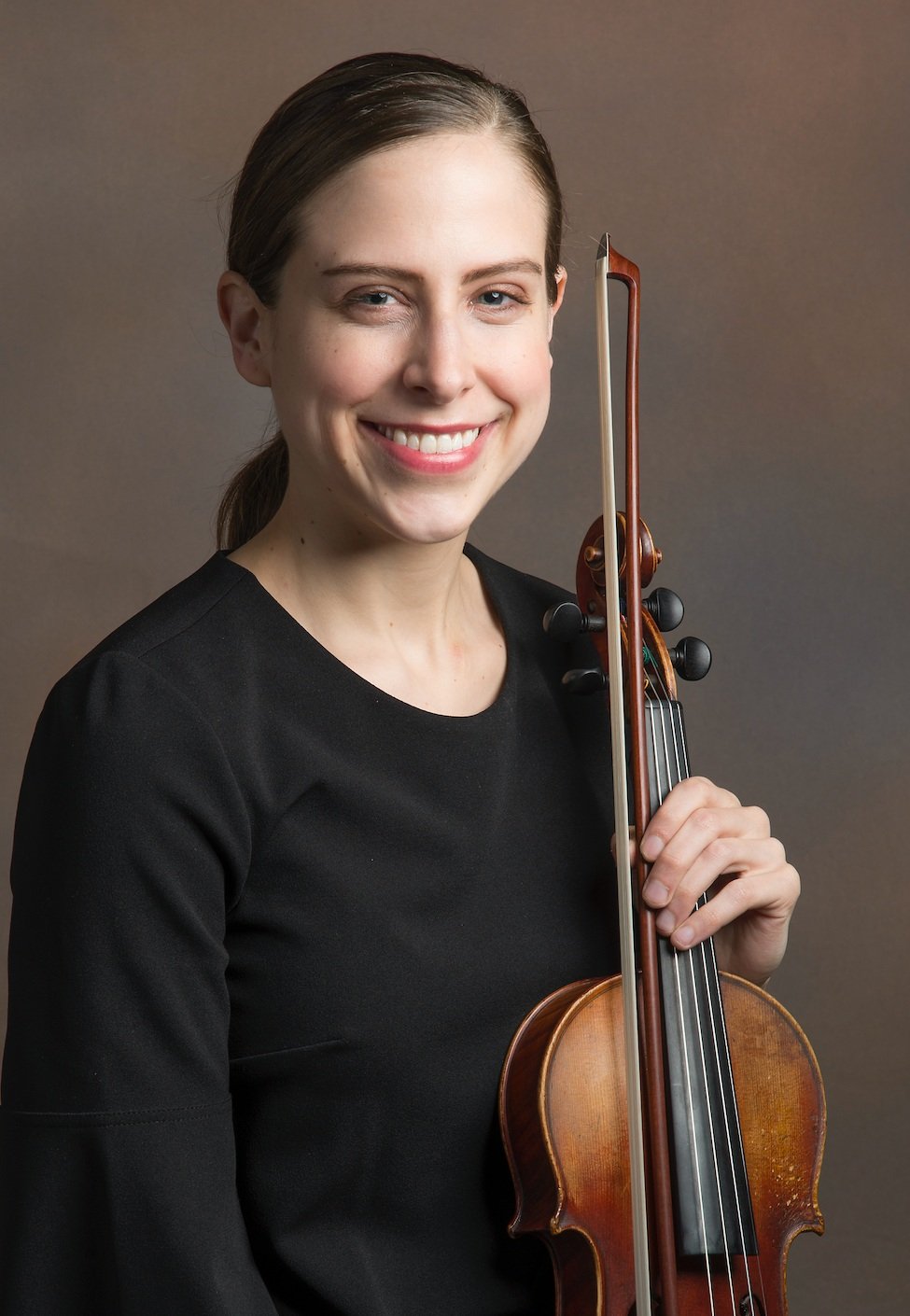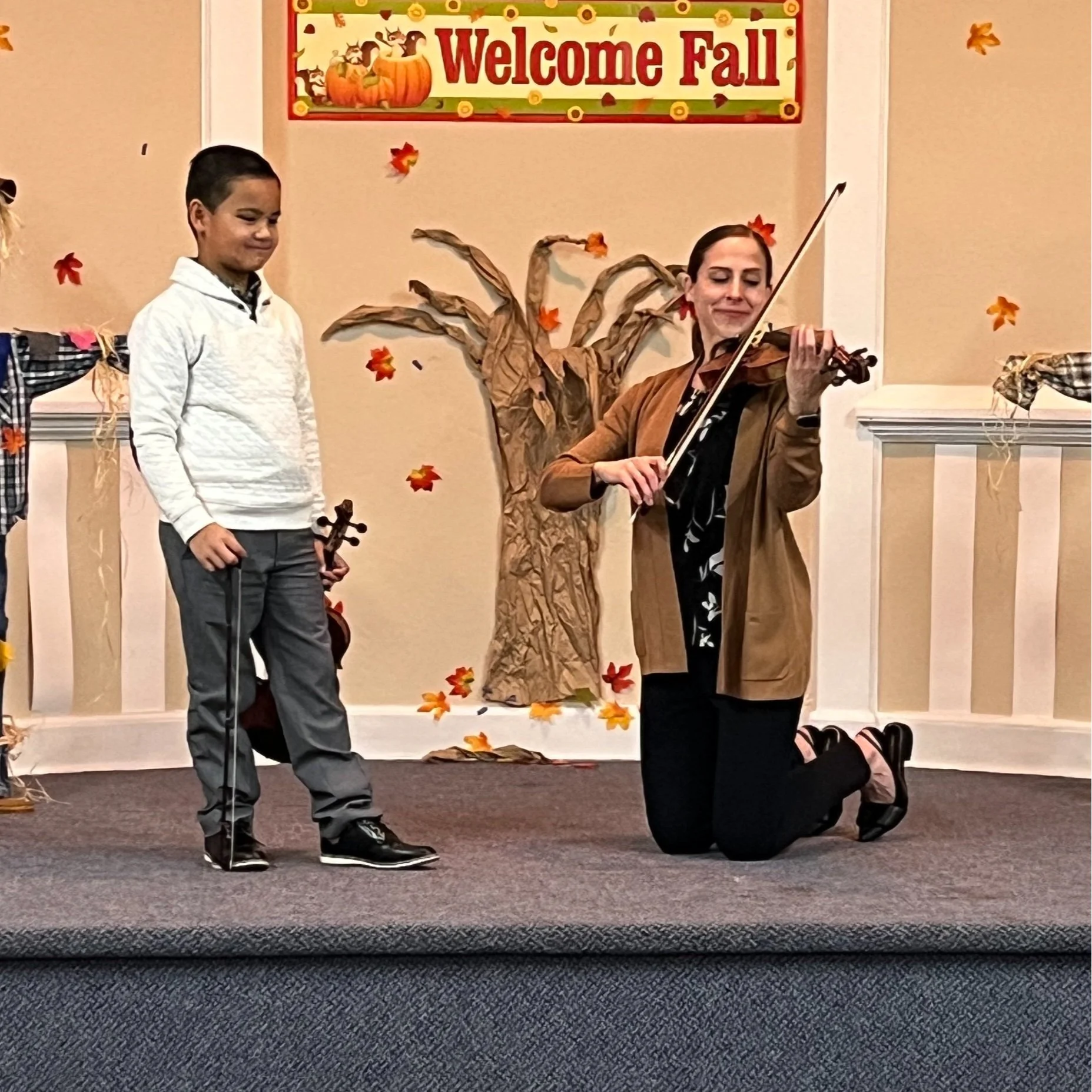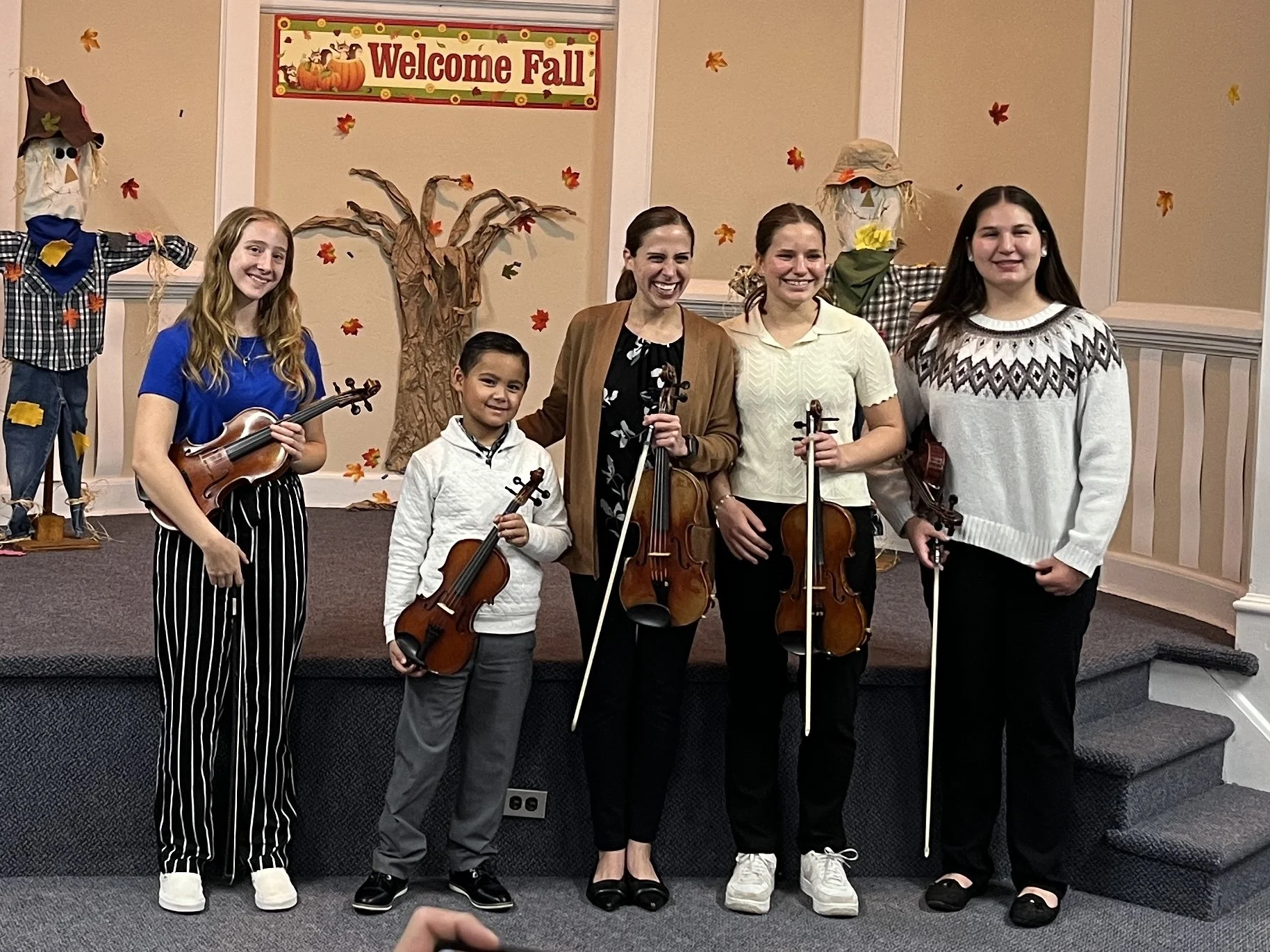Masterclass with Dr. Werner
On November 3, we were so grateful to welcome former PMA teacher and current college professor, Dr. Lauretta Werner for a masterclass for our students. All of the students who played were in her classes during her time with us and so excited to see her again for this event!
Dr. Lauretta Werner, Assistant Professor of Music, Violin at Longwood University and Suzuki violin teacher at the Longwood Center for Community Music.
The evening began with a performance. Dr. Werner performed two selections for the students:
A Little Violin Music: In Memory of Elijah McClain by Ellen Taaffe Zwilich (b. 1939)
Tanz by Krysztof Penderecki (1933-2020)
She explained a little about each piece and why they were both significant to her and to the community at large. She also highlighted advanced techniques present in both pieces and taught the students how to execute these skills.
Alex was the first student to perform. He is preparing to graduate from Suzuki Book 1 and shared both Allegro by Suzuki and Gavotte by Gossec. Dr. Werner complimented the performer on his excellent ability and focused on the fermata present in the third phrase. She described this time in the piece as a perfect opportunity to, “play with the audience’s expectations!” The phrase ends with a cadence leaving the ear expecting a resolution. The performer can use choreography to keep the audience guessing. Be still for a moment and then come back with vigor and confidence to play the final phrase of the piece.
Gavotte is such a busy piece, we find the performer wanted so much to look at the left hand. This can cause the violin to travel forward towards the front of the body and can create tension in the left shoulder and hand. But, Alex is a proficient violin player and demonstrated, after being asked by Dr. Werner, that he was able to play sections of the piece with the eyes closed. His body knew what to do without the aid of the eyes! To further reduce tension in the hand, he was asked to play without touching the thumb to the neck of the violin; to make the left thumb soft and squishy. Both of these activities could be repeated on review pieces until the violin remains on the shoulder and the left thumb muscle is soft.
Izzy was up next and performed the 3rd movement of the Concerto in G Minor by Vivaldi in Suzuki Book 5. Dr. Werner praised her sweet and tender tone and fluid shifting. They spent time realizing how the bow and arm can facilitate good tone and ease in the passages containing fast string crossings. It is necessary for Izzy to have a higher elbow when playing on the G string. It was surprising to us all that when the bow is balanced on the G string, and the violin is removed, the horse hair is parallel to the floor! This created a completely different sensation in the body. When working on dynamics, Dr. Werner detailed a “recipe” for the bow. Depending on what dynamic the player is trying to create, vary the amount of bow
weight
placement
speed
for just the right flavor!
Next up was Sarah, who played La Folia by Corelli from Suzuki Book 6. First Sarah was praised for a confident and fantastic performance. To improve the runs, Dr. Werner described a practice technique she called Bow Pulses. By using up bow staccato, the performer is encouraged to save bow at the beginning of the run. Once each note is clearly heard, figuratively put a little butter on the bow and smooth it out.
Dr. Werner had with her a Baroque bow that she generously shared with Sarah to aid in finding the best tone possible for the repeated chords in the final section of the piece. The Baroque bow is lighter, shorter and shaped with a different tip. It quickly “barks” back at you if you use too much weight. Using the bow encouraged Sarah to find a more ringing sound with a faster stroke and more “petting” approach. The light weight helped to get to the frog more energetically. It was quite exciting to notice the improvement when Sarah went back to her own bow!
The final performer of the evening was Avery, who also performed the 3rd movement of the Concerto in G Minor by Vivaldi in Suzuki Book 5. Avery gave a fantastic performance and Dr. Werner used a number of exercises to help explore different kinds of tone available on the violin.
The Nose exercise: play an up bow and lift off to touch the nose with the back of the hand. Once this is easy, create the same sensation but stay on the string completely.
Upside Down Bow Hold: hold the bow at the tip end of the stick. Play and notice how such a heavy bow can impact the tone. Can you create the same sound holding the bow at the frog?
Pinch Toy: mark the bow using a pinch toy (Dr. Werner had a Koala) as a visual cue to play at, to, or past that spot on the bow.
Finally, the two talked about the success of pop artist, Taylor Swift. What makes her great is how she is able to connect with each and every audience member, even at the back of the arena. We can do the same and send our sound to everyone in the room!
We wrapped the night with Q & A and a group photo. We gave Dr. Werner a little PMA swag to remember the special occasion.
Over the next week, I spoke with each student about their experiences. One student was inspired to create an artistic rendering (which can be viewed in my office!). All of the Swifties were able to relate and incorporate the discussion around performing. The students discussed trying out the suggestions meant for others and benefited from watching how those skills worked for them. The most profound realization was seeing that other students are working through similar situations as themselves. We <3 Masterclasses at PMA!







